Understanding Fractions as Decimals: A Comprehensive Guide
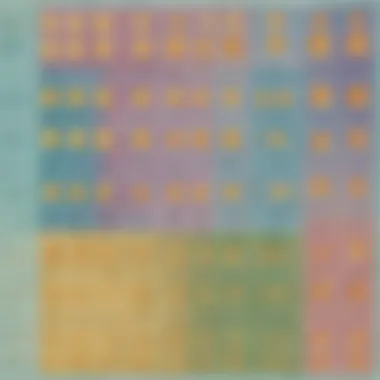
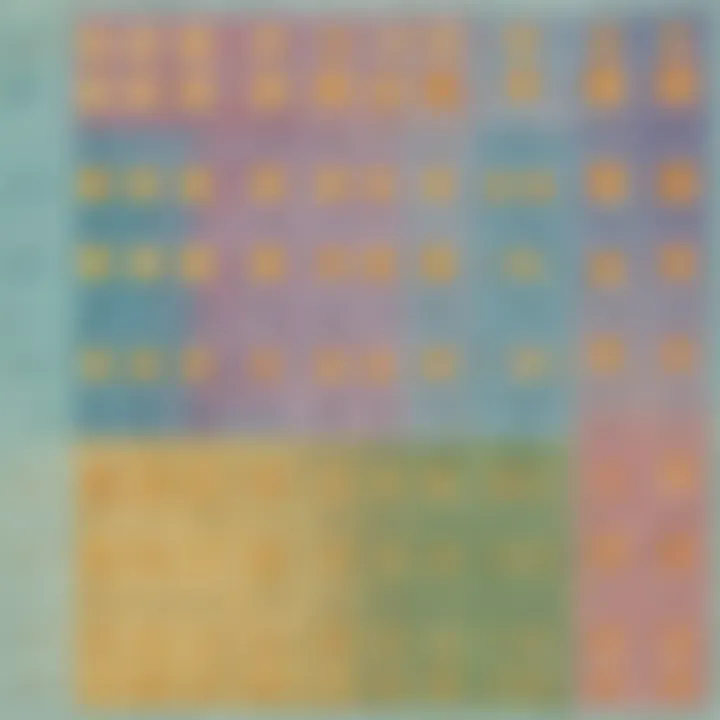
Intro
Understanding fractions as decimals is vital for grasping fundamental mathematical concepts. Fractions and decimals, while seemingly distinct, are tightly intertwined. Both represent parts of a whole; however, their appearances and usages differ. By mastering this relationship, learners build a strong foundation for future math studies.
In this article, we will dissect the connections between fractions and decimals, outlining the various methods for converting between the two forms. The goal is to simplify these concepts for elementary school children, enabling them to gain confidence in their math skills.
Creative Activities
Engaging young minds through hands-on activities deepens understanding of fractions and decimals. Here are some creative ideas:
- Fraction Pizza: Use a paper plate to illustrate fractions. Cut it into slices to visualize 1/2, 1/4, and other fractions. Children can decorate the slices with toppings resembling decimal values.
- Decimal Number Line: Create a large number line on the floor with tape, marking important fractions and their decimal equivalents. Students can jump to the correct spot as an interactive learning experience.
Step-by-Step Guides
Fraction Pizza Activity:
- Gather materials: paper plates, scissors, and markers.
- Have children color different parts of the pizza.
- Discuss what each part represents in fraction form.
- Encourage them to write the decimal equivalent of each fraction.
Decimal Number Line:
- Measure and tape a long line on the floor.
- Label increments including 0, 0.25, 0.5, 0.75, and 1.
- Let students place markers at corresponding fractions and decimals.
Educational Value
These activities offer engaging ways to visualize and grasp fractions and decimals. They foster a tactile learning experience, which is essential for memory retention and comprehension in young learners.
Fun Quizzes
To reinforce learning, quizzes provide an excellent platform for assessment and engagement. Here are the topics covered:
- Conversion methods between fractions and decimals.
- Real-world applications of fractions.
- Identifying equivalent fractions and decimals.
Question Types
The quiz formats can vary:
- Multiple choice questions to test basic knowledge.
- Fill-in-the-blank sections requiring decimal and fraction conversions.
- Practical questions that relate to daily life scenarios, which engage children.
Knowledge Reinforcement
Quizzes ensure understanding of key concepts. They provide instant feedback and highlight areas needing further exploration. This structured learning experience solidifies foundational math skills.
Fact-Based Articles
Fact-based articles serve to deepen the knowledge base of learners:
- Topics can range from historical significance of fractions to formulas for conversion.
- Engaging content illustrates concepts clearly, avoiding complex jargon that can confuse young readers.
Prolusion to Fractions and Decimals
Understanding fractions and decimals is essential in mathematics. These two concepts are not only foundational, but they also serve practical purposes in everyday life. They provide a way to represent parts of a whole and to work with quantities that are not whole numbers. Learning how to interpret and manipulate fractions and decimals helps individuals make informed decisions in various situations, from managing finances to cooking and measuring.
Definition of Fractions
A fraction is a numerical representation used to describe a part of a whole. It consists of two parts: the numerator and the denominator. The numerator indicates how many parts are being considered, while the denominator shows how many equal parts the whole is divided into. For example, in the fraction 3/4, the number 3 represents three parts, and the number 4 indicates that the whole is divided into four equal parts. Fractions can also represent proper parts (where the numerator is less than the denominator) or improper parts (where the numerator is equal to or greater than the denominator).
Definition of Decimals
Decimals provide another way to express numbers that may not be whole. A decimal consists of a whole number and a fractional part separated by a decimal point. For instance, the number 0.75 represents three-quarters, as the 75 in the decimal reflects the 75 parts of 100. Decimals can be terminating, like 0.5 or 2.75, or repeating, such as 0.333, which continues indefinitely. They are particularly useful for making calculations easier and more precise, especially when dealing with measurements and money.
Importance of Understanding Both Concepts
Grasping both fractions and decimals is crucial for mathematical fluency. These concepts often appear together in various applications and are interchangeable in many cases. Understanding how to convert between them allows individuals to tackle a broader range of mathematical problems effectively. Furthermore, recognizing the significance of precision in both forms can enhance their ability to solve problems accurately and efficiently. The ability to switch between fractions and decimals is not only academically beneficial but it equips learners with essential life skills.
Relationship Between Fractions and Decimals
Understanding the relationship between fractions and decimals is essential in mathematics. Recognizing how these two forms relate helps develop a solid foundation for more advanced math concepts. Fractions represent a part of a whole, while decimals express the same value in a different format. Mastering this relationship allows for greater flexibility in calculations and enhances problem-solving skills.
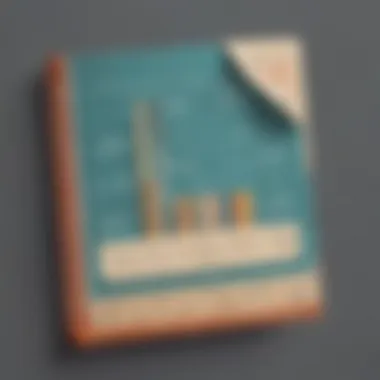

How Fractions Convert to Decimals
The conversion of fractions to decimals can be approached in various ways. The first method involves long division. When dividing the numerator by the denominator, the resulting quotient gives the decimal form. For example, converting 1/4 involves dividing 1 by 4, which results in 0.25.
Another way to convert fractions to decimals is by converting to an equivalent fraction with a denominator of 10, 100, or 1,000. For instance, changing 3/4 into an equivalent fraction means finding a fraction that can easily convert to a decimal. In this case, we can multiply both the numerator and denominator by 25 to get 75/100, which equals 0.75.
Understanding Equivalent Forms
Learning equivalent forms is vital for recognizing the interconnectedness of fractions and decimals. An equivalent fraction maintains the same value as the original fraction, just represented differently. For example, 1/2 is equivalent to 2/4, and both can also be shown as 0.5 in decimal form. This understanding allows for easier conversions and comparisons between fractions and decimals.
An important aspect to consider is that some fractions convert into repeating decimals. For example, 1/3 converts to 0.333, indicating that the '3' repeats infinitely. Recognizing these equivalences aids students in grasping the concept more effectively.
Real-Life Examples of Usage
Fractions and decimals appear frequently in real life, making their understanding crucial. One common example is in cooking. Recipes often provide measurements in fractions, such as 1/2 cup of sugar. However, if a recipe is also required to be doubled or halved, converting those fractions to decimals can simplify measurements.
Another instance occurs in finance. When dealing with currency, prices are usually represented in decimals. For example, $0.75 is equivalent to 3/4 of a dollar. Understanding these relationships aids in making more informed decisions when purchasing items or calculating expenses.
Understanding the connection between fractions and decimals is essential for mastering mathematics and its real-world applications.
Methods for Converting Fractions to Decimals
Converting fractions to decimals is more than just a mathematical task; it is a crucial skill that enhances comprehension of numeric relationships. This section covers three key methods to facilitate the conversion process. Each method has its own advantages and scenarios where it can be most effective.
Long Division Method
The long division method is a straightforward yet powerful approach to converting fractions to decimals. In this method, the numerator is divided by the denominator. For example, for the fraction 3/4, you can set it up as 3 divided by 4. The process might seem daunting at first, but with practice, it becomes more manageable.
- Set up the division: Write 3 as the dividend and 4 as the divisor.
- Perform division: Determine how many times 4 fits into 3. Since it cannot, place a zero in the quotient and add a decimal point. Then continue with 30.
- Continue the division: For 4 into 30, it fits 7 times, equaling 28. Subtract to get 2. Add another zero to bring down.
- Repeat as necessary: Continue this process until you reach the desired decimal place or it terminates.
This method is especially useful when understanding the recurring nature of some fractions. Practice with different fractions can help students feel more comfortable with long division in general.
Multiplying by Factor of Ten
This method takes advantage of the straightforward connection between fractions and powers of ten to convert simpler fractions into decimals. When you multiply a fraction by a factor of ten, you can shift the decimal point accordingly. This method works best for fractions with denominators that are factors of 10, such as 10, 100, or 1000.
- For example, if you have the fraction 1/10, you can see that 1/10 equals 0.1 by simply moving the decimal one place to the left.
- For the fraction 3/100, multiplying both the numerator and denominator by 10 gives you 30/1000, which is 0.3.
This technique is less applicable when dealing with complex fractions but is efficient for basic fractions. It’s crucial to understand that this method works under specific conditions and practicing will lead to a quick grasp of the concept.
Using a Calculator
In the digital age, calculators are invaluable tools for quickly converting fractions to decimals. While this method may seem less educational, it still plays a significant role in enhancing efficiency, especially in real-life applications where time is essential. Calculators can take the unpredictability out of manual calculations and minimize errors.
It is important, however, for students to understand how a calculator functions and confirm their results through other means.
- Input the fraction: Many calculators have the option to directly input a fraction, such as 1/4.
- Press the equal button: The calculator will yield the decimal result, in this case, 0.25.
Using a calculator may not develop fundamental skills as much as manual methods, but it aids in working with more complicated problems efficiently.
Each method for converting fractions into decimals enriches understanding in distinct ways. Exploring various approaches ensures that students can select the one that best fits their learning style and context. The choice of method can depend on the fraction's complexity as well as the tools available.
Precision in Fractions and Decimals
Precision in measurements and calculations is a vital aspect of working with fractions and decimals. It shapes how we use these numbers in practical scenarios. Knowing how precise a number needs to be is essential in different fields, such as science, engineering, and finance.
In mathematics, precision might mean providing enough decimal places in a calculation, or using an appropriate fraction to make the problem clearer. For younger learners, grasping the concept of precision can enhance their mathematical skills and confidence. This skill becomes a building block for future learning.
Understanding precision helps avoid errors in calculations. For instance, when you calculate the total price of items, rounding to an excessive number of decimal points may not be necessary. However, in scientific experiments, every decimal can matter.
It is crucial to maintain precision, depending on the context. Oversimplifying can lead to significant misunderstandings.
Significance of Place Value
Place value is fundamental in determining the value of digits in both fractions and decimals. It shows how the position of a digit can change its value immensely.
For example, in the decimal number 0.75, the digit 7 is in the tenths place, meaning it represents seven-tenths, while the 5 is in the hundredths place, representing five-hundredths. In fractions, 3/4 indicates that the numerator is three parts of a whole that is divided into four equal parts.
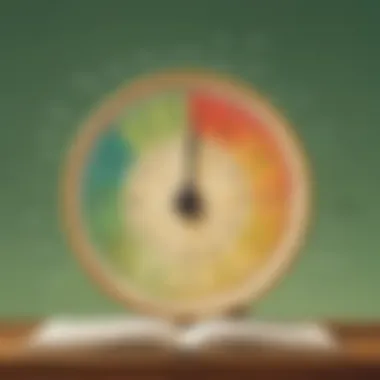
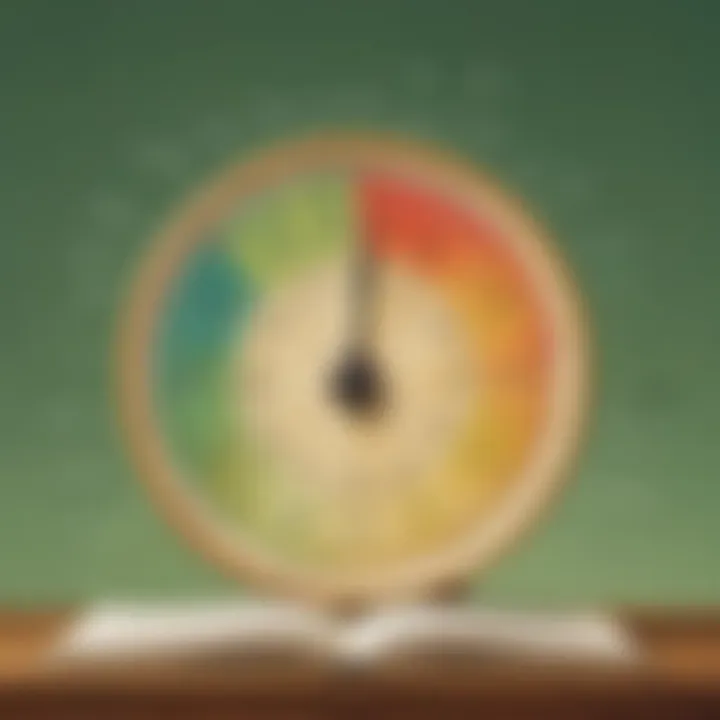
Learning about place value helps students understand why precise conversions and computations are essential. It lays the groundwork for understanding larger numbers and fractions.
Key Points on Place Value:
- Each position in a decimal has a different value (ones, tenths, hundredths).
- In fractions, the denominator determines how many equal parts the whole is divided into.
- Students need to practice identifying place value to improve their mathematical proficiency.
Rounding vs.
Exact Values
Rounding can simplify numbers to make calculations easier, but it also introduces a degree of inaccuracy. Knowing when to round and when to use exact values is essential for learners.
For example, if a student has to divide 1/3 as a decimal, the exact value is 0.333, but it might be rounded to 0.33 for simplicity in certain calculations. However, in contexts that require extreme precision, such as engineering designs, rounding can lead to problems.
Students should learn both methods. They need to understand that in many scenarios, using an exact number is preferable, while in other situations, rounding can hasten calculations.
Considerations for Rounding:
- Rounding can lead to simpler numbers, but precision can be lost.
- In everyday use, rounding is common for convenience.
- Exact values are better in scientific and mathematical contexts.
Common Misconceptions About Fractions and Decimals
Understanding the common misconceptions about fractions and decimals is essential for clarity in learning mathematics. These misconceptions can create barriers in understanding and applying mathematical concepts effectively. Addressing these myths helps students build a solid foundation in math, allowing them to navigate problems with confidence.
Assuming All Fractions Are Less Than One
A prevalent belief among students is that all fractions must be less than one. This stems from early education where fractions like 1/2 or 3/4 are commonly introduced. However, this is misleading. Fractions can take various forms and can represent values greater than one. For instance, the fraction 5/4 is equal to 1.25, clearly exceeding one.
Recognizing that fractions can be greater than one is crucial for comprehension. These fractions are often referred to as improper fractions, illustrated by examples like 7/3 or 9/8. While this notion is introduced later in levels of math, early exposure is significant. It can prepare students for future topics, including mixed numbers and improper fractions.
Some key points to remember include:
- Improper Fractions: These are fractions where the numerator is larger than the denominator.
- Mixed Numbers: These combine a whole number and a proper fraction, such as 1 1/2.
- Visual Representation: Using pie charts or fraction bars can help students visualize fractions that exceed one.
Addressing this misconception fosters a broader understanding of fractions, ensuring students can engage with more complex mathematical concepts effectively.
Believing Decimals Are Always Longer Than Fractions
Another common misbelief is that decimals are always lengthier or more complicated than fractions. This is not accurate, as the length of a decimal does not determine its complexity or usefulness. A fraction is simply another way to express a number that can easily be converted into decimal form. In some cases, decimals can be shorter.
For example, the fraction 1/2 appears as 0.5 in decimal form. In contrast, a number like 1/8 is represented as 0.125. While the decimal equivalent of 1/8 is longer, that's not true for all cases. Fractions such as 1/4 convert neatly into 0.25, which is shorter than many lengthy decimals.
To address this belief effectively, educators should reinforce:
- Conversion Understanding: Show how to convert fractions to decimals and vice versa.
- Visual Aids: Use comparison charts to show examples of fractions and their decimal counterparts.
- Practical Applications: Include real-life scenarios where fractions are more useful than decimals.
Correcting these misconceptions can lead to a stronger understanding of mathematics, helping students appreciate both fractions and decimals equally. It fights against confusion and promotes a more informed approach to both concepts.
Educational Significance for Elementary Students
Understanding fractions and decimals is not merely an academic exercise; it's crucial for nurturing mathematical proficiency in young learners. As children engage with these concepts, they build strong foundational skills that will support further studies in math and science. Here, we will explore why grasping these topics is significant for elementary students.
Building a Strong Mathematical Foundation
Fractions and decimals are prevalent in everyday life. In elementary education, children first encounter these as parts of whole entities. This early exposure is important because it creates a clear path for understanding more complex mathematical ideas. When students learn to recognize that fractions can appear in many forms, they develop a keen sense of numerical relationships.
- Practical Applications: Real-life applications can be made clear. For example, measuring ingredients in cooking or dividing a pizza among friends illustrates how fractions play a role in everyday decision-making.
- Conceptual Understanding: Engaging with fractions and decimals helps students understand ratios, percentages, and proportions, all of which lay the groundwork for algebra and beyond.
Fostering a solid mathematical foundation encourages students not to shy away from numbers but to feel confident when facing various math challenges in the future.
Enhancing Problem-Solving Skills
Developing problem-solving skills is a fundamental goal in education, particularly in mathematics. Mastering fractions and decimals enhances logical thinking and analytical abilities, which are critical for solving a wide range of problems.
- Critical Thinking: Teaching children how to convert between fractions and decimals encourages them to identify patterns and relationships in numbers. This critical thinking nurtures a problem-solving mindset, helping them tackle more complicated problems later on.
- Confidence Building: As students practice converting and applying fractions and decimals, their confidence grows. This self-assurance spills over into other subjects, aiding their overall academic journey.
Understanding these concepts forms an integral part of suitable education. Mastering fractions and decimals will not only help elementary students succeed in math but also let them appreciate the beauty and function of mathematics in the world around them.
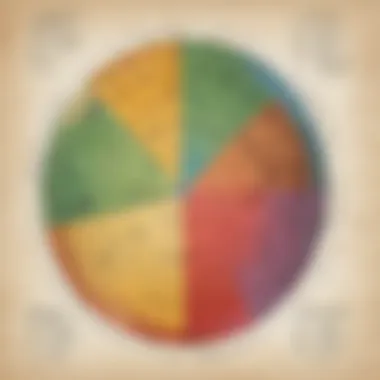
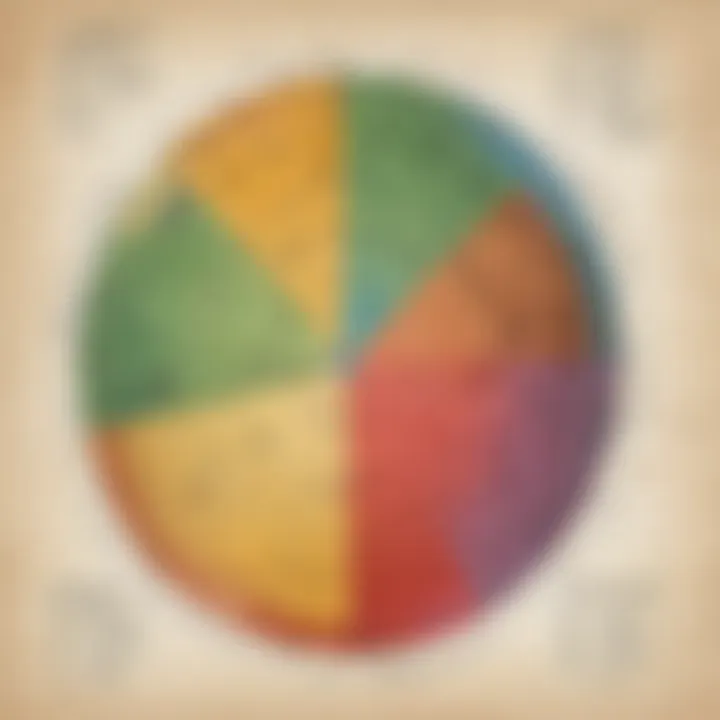
In summary, learning about fractions and decimals in elementary school lays essential groundwork for advanced studies and daily life skills, ensuring students are better prepared for the future.
Practice Problems and Solutions
Understanding fractions as decimals requires practice. Engaging with various problems helps reinforce these concepts for both children and adults. It promotes critical thinking and deepens comprehension. Different levels of problems cater to diverse learning stages, making them suitable for the elementary school curriculum.
Practicing these problems allows students to grasp the process of converting fractions to decimals and helps them understand when to apply these conversions in real life. It builds confidence, essential for tackling more advanced mathematical concepts.
The following sections will discuss specific practice problems and their solutions.
Simple Fractions to Decimal Conversions
Converting simple fractions to decimals is often the first step for learners. A fraction represents a part of a whole, while decimals provide a way to express these parts in a different format. For example, converting the fraction 1/2 to a decimal involves dividing 1 by 2, resulting in 0.5.
Here are several simple fractions and their decimal equivalents:
- 1/4 = 0.25
- 1/5 = 0.2
- 3/10 = 0.3
- 1/8 = 0.125
To commit these conversions to memory, practice is key. Students can create flashcards or perform worksheet exercises to reinforce learning. Understanding these basics lays a foundation for recognizing and working with more complex fractions.
Challenging Problems for Advanced Understanding
As students become more proficient with simple conversions, it is essential to introduce challenging problems. This encourages critical thinking and analytical skills. Advanced problems may involve mixed numbers, improper fractions, or those requiring rounding.
For instance, consider the fraction 7/16.
- Convert it to a decimal by performing long division. Divide 7 by 16.
- Upon division, it results in approximately 0.4375.
Here are some additional challenging fractions to convert:
- 5/6
- 9/20
- 11/12
Each of these fractions requires careful calculation and attention to detail.
Understanding fractions and decimals deeply can unlock various applications in daily life, mathematics, and beyond.
Summary of Key Concepts
Understanding fractions as decimals is crucial in mathematics. This connection helps learners grasp how numbers can represent portions, not just whole entities. By distinguishing between fractions and decimals, individuals develop a nuanced comprehension of numerical representation, essential for everyday calculations.
Recap of Conversion Methods
The article outlined several methods for converting fractions to decimals:
- Long Division Method: This traditional approach involves dividing the numerator by the denominator. It is reliable but can be time-consuming if the numbers are large.
- Multiplying by Factor of Ten: This method works for fractions with denominators that are powers of ten, like 10, 100, or 1000. It simplifies the conversion process significantly.
- Using a Calculator: Modern technology allows quick conversions through calculators. Inputting a fraction directly can lead to immediate decimal equivalent.
Mastering these methods is essential for academic success and prepares students for real-life applications requiring calculations.
Final Thoughts on the Relationship
In summation, understanding the relationship between fractions and decimals enhances mathematical literacy. It is not just about performing calculations but also about appreciating numerical systems' structure. As students learn to convert between these forms, they build a foundation that supports higher-level mathematics.
Additional Resources for Learning
Understanding fractions and decimals is crucial for developing a strong mathematical foundation. Additional resources play a key role in reinforcing these concepts. They offer students, parents, and caregivers the chance to explore beyond the classroom. When students engage with diverse materials, they gain insights and perspectives that deepen their comprehension.
Exploring available resources can motivate learners and help them visualize mathematical relationships. Here are two highly effective types of resources to consider:
Books and Online Materials
Books serve as fundamental resources, offering structured content on fractions and decimals. They provide clear explanations, step-by-step guides, and practice exercises that help consolidate learning. Some notable titles include:
- "Fraction Fun" by David Adler - Aimed at younger audiences, this book presents fractions through engaging stories and illustrations.
- "Decimals: A Very Short Introduction" by Peter M. Cohn - A more advanced exploration, effective for older students looking to enhance their understanding of decimals.
Online materials complement traditional learning. Websites like Wikipedia offer concise definitions and explanations about fractions and decimals. Educational platforms such as Khan Academy provide extensive video tutorials and exercises that cater to various learning paces. Users can track progress and revisit difficult topics, enhancing retention.
Interactive Educational Games
Interactive games create an enjoyable and effective learning environment. They engage students in a manner that keeps them invested in the subject. Games that focus on fractions and decimals often incorporate visual aids and challenges. This interactive mode of learning supports different learning styles. Some recommended platforms include:
- Prodigy Math - An engaging platform that adapts to the student's skill level, offering math challenges related to fractions and decimals.
- Kahoot! - This gamified learning tool allows teachers to create quizzes on fractions and decimals that can be played in the classroom or at home.
Through these resources, learners can strengthen their understanding of fractions and decimals, making math less intimidating and more accessible. Using a mix of books, online materials, and educational games ensures a well-rounded approach to mastering mathematical concepts.







